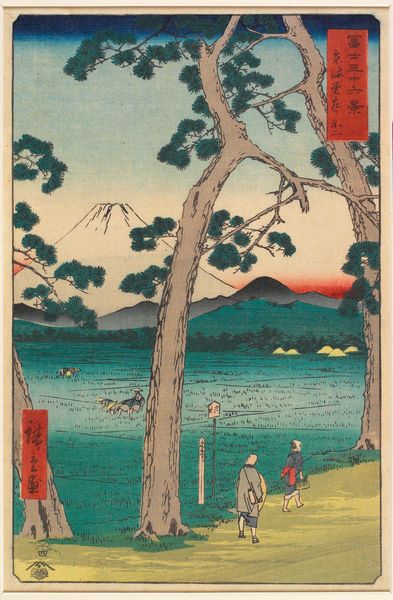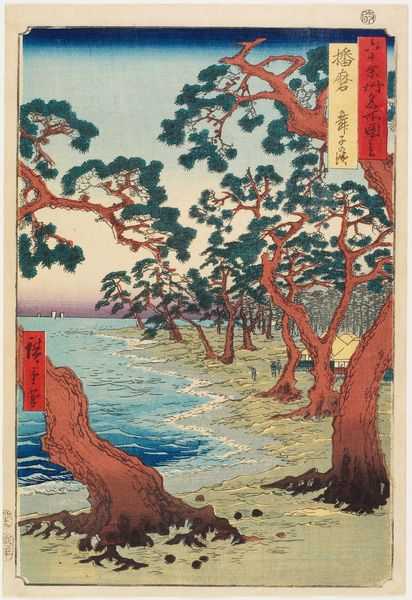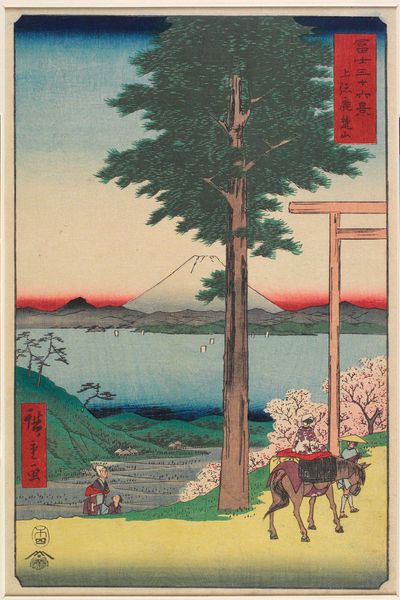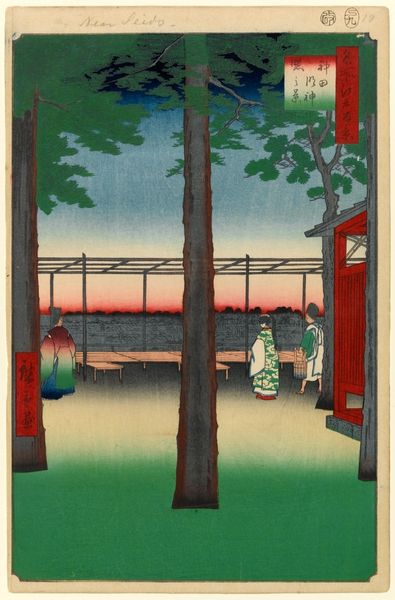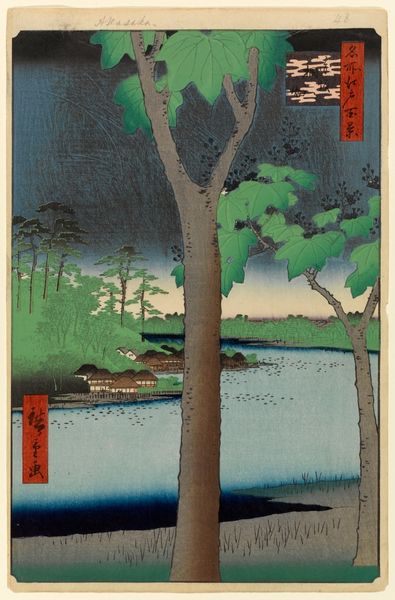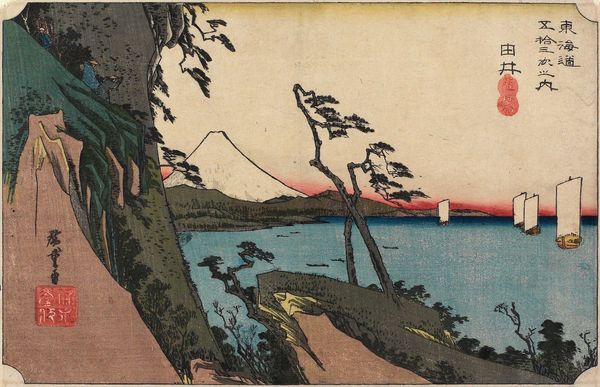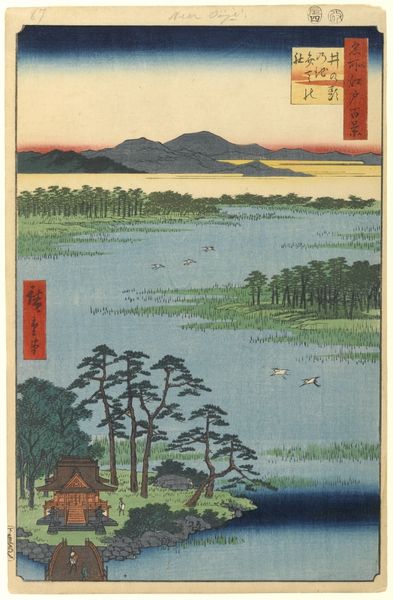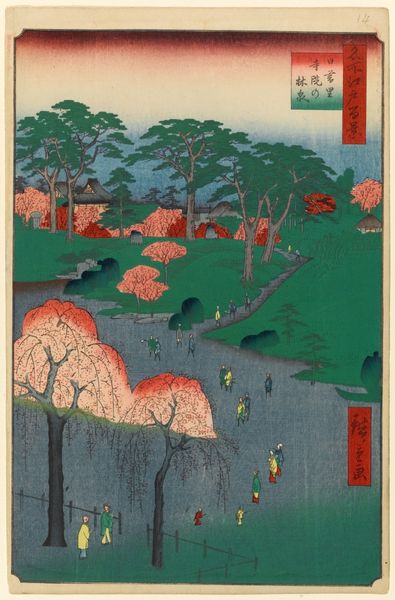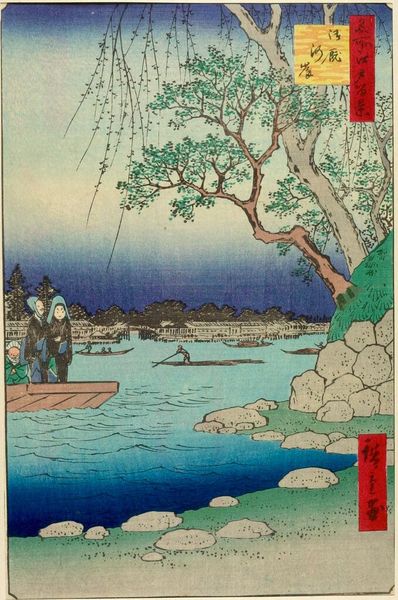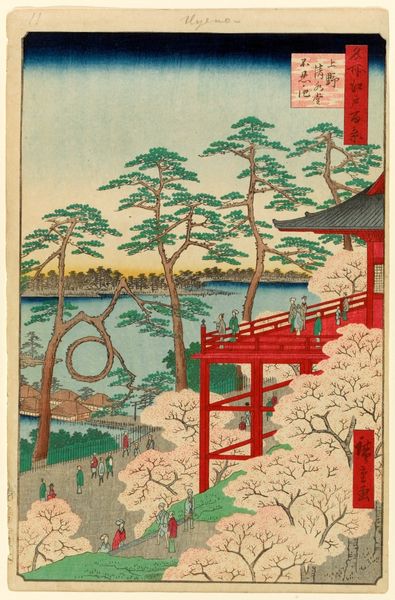
Fuji Seen from the Left on the Tōkaidō Possibly 1858
0:00
0:00
print, plein-air, paper, ink, woodblock-print
#
narrative-art
# print
#
plein-air
#
landscape
#
ukiyo-e
#
japan
#
figuration
#
paper
#
ink
#
coloured pencil
#
woodblock-print
#
orientalism
#
line
#
cityscape
Dimensions: 13 5/16 × 8 9/16 in. (33.8 × 21.8 cm) (image, vertical ōban)
Copyright: Public Domain
Editor: Right now we’re looking at “Fuji Seen from the Left on the Tōkaidō,” a woodblock print by Utagawa Hiroshige, dating back to possibly 1858. It's lovely how he's framed Mount Fuji with those trees. What do you see when you look at this, especially considering the period it was made? Curator: Well, it's vital to recognize that ukiyo-e prints like these weren't simply artistic expressions. They were commodities, deeply intertwined with the burgeoning tourism industry in Edo-period Japan. How does that knowledge shift your understanding of the print? Editor: It makes me think more about who this was made *for*. Not just wealthy art collectors, but maybe travelers or people interested in travel? Curator: Exactly. The Tōkaidō was the main road connecting Edo, modern Tokyo, with Kyoto. Hiroshige’s series depicting this route helped shape perceptions and even promoted travel along it. Consider the carefully composed scene: the travelers, the meticulously rendered landscape, and, of course, Mount Fuji, a powerful national symbol. Editor: So, it's almost like an early form of advertising? A beautiful advertisement, but still serving that purpose. Curator: Precisely! Think about how it was circulated – as a print, readily available, influencing public perception of the Japanese landscape and national identity. These images participated in creating a shared cultural experience, connecting people to a place, even if they never physically travelled there. The 'floating world' wasn't just about pleasure; it was a landscape being constructed and consumed by a public. What does that make you consider further? Editor: It encourages me to think about the way that a common public has interacted with this and how widely available something like this was during the Edo period. I never considered it to be this readily consumable, popular media. Thanks! Curator: Absolutely! Considering the social context really illuminates how art actively participates in culture, shaping identity and even fueling economies.
Comments
No comments
Be the first to comment and join the conversation on the ultimate creative platform.
